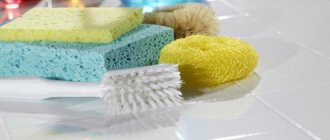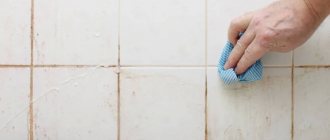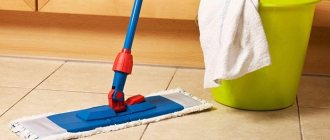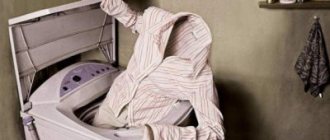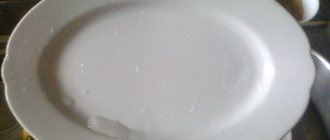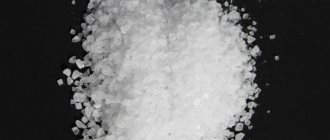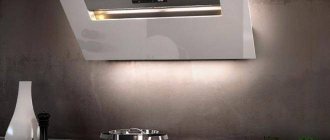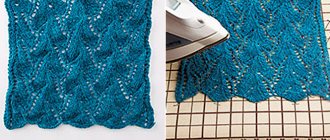Most owners tiling their bathrooms and kitchens with ceramic tiles. But over time, the coating loses its original appearance. The seams between the tiles darken, sometimes even becoming covered with mold and mildew.
You can cope with the problem using various methods that help whiten the grout between the tiles.
Why does grout darken over time?
Ceramic tiles are almost ideal because they are very easy to clean. However, grouting is more “capricious”: sooner or later, it becomes the cause of headaches for most owners of finishing with snow-white seams. Therefore, they have to correct the situation; more often they do this work themselves. But not everyone knows which means guarantee results.
Before wondering what and how to clean the seams between the tiles, you need to find out why it changed its color. It is the reason that can give a hint on how to act in a particular case. Pollution can be caused by several factors:
- ventilation system, the operation of which cannot be considered effective;
- constant high humidity, temperature changes in the room;
- seams that were forgotten to be properly treated before grouting;
- irregular or complete lack of tile maintenance;
- the kitchen hood does not work well;
- purchasing grout of questionable quality;
- violation of technology during work.
All issues can be resolved, since cleaning the seams between the tiles is a very real task. There are several ways to fix the problem. The simplest is the use of one or another product for bleaching, cleaning, and antiseptic treatment. But this is not the only way out. In some cases, when the dirt has ingrained itself very deeply, only one, drastic method of combating it helps - completely replacing the grout. It is better to mentally prepare for both options at once.
Why wash tile grout?
The air in the bathroom is more humidified than in other areas of the home. Against the background of regular temperature changes, condensation occurs on walls and pipes. In addition, the moisture contained in hot steam settles on surfaces. These factors contribute to the proliferation of harmful microorganisms: fungal spores, bacteria.
As the area of mold damage to walls increases, the risk of deterioration in health also increases: respiratory tract diseases and other complications (allergies, skin pathologies) may develop.
If dirt appears in the space between the tiles, it immediately attracts attention, because in most cases the bathtub is decorated in light colors. The presence of dark spots worsens the interior and contributes to discomfort when visiting such a room.
It is important to keep the bathroom clean not only for aesthetic reasons, but also to ensure hygiene.
Why is it cheaper to bleach the grout than to replace it?
In order to return the bathtub to its original appearance, you do not need to replace the tiles, just clean the seams.
If you follow the recommendations below, you will be able to remove:
- Fungus.
- Yellow plaque.
- Dark coating.
At the same time, you can cope with such a problem without outside help, which will help you save a significant amount. Yes, this process cannot be called easy, but the instructions, which describe everything in detail, will make it possible to return the tiles in the bathroom to the appearance of a new coating. There are several factors that may negatively affect the seams in the future, and then cleaning will take longer:
- Poor functioning of the ventilation system.
- The seams were not processed before grouting.
To make your bathroom beautiful again, it will be enough to use two main methods:
- Use paint/whitewash and do not remove old grout.
- Before applying new compounds, remove the old coating.
Now let's take a closer look at how to update the seams.
Applying markers
The white color of the seams between the tiles is returned by a special marker or pencil for whitening plumbing seams. Such devices really look like a pencil, which is filled with white ink (paint), intended for finishing activities.
The coloring composition is absolutely safe for humans and has no odor. They are translucent, water resistant, and also contain antiseptic ingredients that can protect against mold and mildew. After drying, the ink forms a durable, waterproof film with a varnish effect. In addition to white, you can choose a pencil for bleaching plumbing seams with another necessary shade.
The paint is very easy to apply. The seams are wiped clean of dust, after which lines of the required thickness are drawn with a marker. Once dry, they provide the desired color, updating the appearance.
These pencils are offered by many manufacturers. The following products are popular: Snowball, Grout Aide, Bradex, Edding E-8200 and a number of others.
Cleaning methods
Tile and tile joints can be cleaned not only with different means, but also in different ways, depending on the degree and type of contamination. It is important to know not only how to wash floor tiles to avoid streaks, but also how to get rid of grease, dirt and tile adhesive.
Manual mechanical cleaning
A simple, effective, but labor-intensive method. Allows you to remove contamination from tile joints by mechanical treatment. Depending on the degree and depth of damage to the seam, dirt is used in the following cases:
- For minor stains - a variety of abrasive pastes and powders.
- In more difficult cases - fine-grain sandpaper.
- Another option is a kitchen scraper.
- A semicircular chisel of small diameter has proven itself well.
Manual mechanical cleaning should be used carefully. The main thing is not to overdo it and not erase the grout completely, because then it will have to be completely replaced. Otherwise, this is the best way to wash the tiles on the floor from stubborn dirt, quickly and efficiently.
Household chemicals
The achievements of modern chemistry are enormous and if the use of the means listed above did not produce results, this does not mean that the situation has reached a dead end. Household chemical stores offer a wide range of tile cleaning products.
The choice is up to the user, who can make it based on the degree and nature of contamination.
Recommendations for selection:
- For the bathroom, it is recommended to use bleach and chlorine-containing products. They remove fungus and mold until the middle stage of neglect.
- You will need alkaline preparations in the kitchen. Available in spray and liquid form. For seams, you can use oxygen bleach, which is recommended to be diluted 1 to 2. Special markers also do this job well.
Using paint to update seams
Painting seams allows you to completely restore their decorative properties or change their color, but not for long. Performed in the following sequence:
- Using any method described above, we clean the seams from dirt.
- Vacuuming.
- Use a thin brush with acrylic waterproof paint to paint, if necessary, in two layers. We remove the excess. Instead of acrylic paint, you can use fugue, the same color as the old grout.
Using special markers
Marker is the same paint, just in a form more convenient for processing seams. The method is also short-lived.
Before using the marker you need:
- clean the surface to be treated from dirt;
- treat with antiseptic agents to remove fungus and mold.
Mechanical cleaning of tile joints
If cleaning has not been carried out for a long time, then one day you may notice that simply applying a cleaning agent is no longer enough - mechanical work is needed here.
Fine-grain sandpaper removes stubborn dirt well
The work must be carried out slowly and carefully, as the tiles can be scratched. Cleaned seams are washed with water and wiped. The method is safe for health, but requires physical effort and time.
A stiff sponge can remove dirt and mildew.
A stiff brush with cleaning agent can remove dirt.
The more often you wash away dirt, the less effort it will take in the end.
Related article:
How to clean a shower stall : household chemicals, folk remedies, how to clean glass and shower trays, how to remove limescale and mold, advice and recommendations from experts - in our publication.
Help from folk remedies
How to clean the grout between tiles? Where to start? Typically, owners of “discolored” seams proceed from simple to complex. There are quite a lot of remedies used, but it is possible that one of the folk recipes will be effective. In this case, the owners do not even have to go to the store, since most of the necessary products are already in the house or apartment.
Soda
Perhaps the simplest and most economical method is baking soda, which is available in almost every home. The advantage of this method is its safety, since soda is non-toxic.
- We wet the seams with water, apply soda to them and leave for a couple of minutes;
- take a toothbrush and thoroughly clean the seams from dirt;
- if the area of contamination is large, then cleaning can be done using a bathroom brush;
- then wash everything off with a shower or watering can.
Using baking soda and vinegar
In this case, instead of the traditional component, it is allowed to use any acidic product: it can be lemon juice or a solution of citric acid. You can make a remedy from several acidic ingredients. To treat surfaces, you will need to prepare a spray bottle, a brush and a soft cloth (rags).
- Prepare a cleaning product: mix 7 glasses of water and ½ glass of soda, add a quarter glass of vinegar and a third of lemon juice (acid solution).
- Mix everything thoroughly, pour some into a spray bottle. Generously spray all seams (and tiles), allow the liquid to absorb, leaving the surface alone for 15 minutes.
All seams and tiles are brushed. After completing the procedure, the surfaces are washed several times with clean water and then wiped dry.
Lemon juice, mustard, soda and toothpaste
This multi-component product will help not only lighten seams, remove mold spores and dirt, but also degrease the surface.
Algorithm of actions:
- Dissolve 100 grams of baking soda, 75 ml of freshly squeezed lemon juice, 1 tbsp in one liter of water. mustard powder and 1 tbsp. toothpaste.
- The resulting mixture is spread onto the tile joints using a toothbrush.
- After twenty minutes, the cleaned surface is thoroughly washed off with water.
Using whitening toothpaste will enhance the cleaning effect of the prepared composition.
A mixture of baking soda, fresh lemon juice and vinegar
The amount of ingredients will be as follows:
- soda – ½ cup;
- lemon juice – 1/3 squeezed fruit;
- vinegar (9%) – ¼ cup.
Dissolve all of the above components in 1.5 liters of boiled water and cooled to room temperature. The acid released by lemon and vinegar, entering into a chemical reaction with soda, will lead to increased foaming. To prevent splashes from staining surrounding objects, you need to stir the composition with leisurely movements.
First put rubber gloves on your hands. Rub the resulting product into the tile joints using an old toothbrush or a sponge with the hard side. The composition will return the tile and its joints to their original appearance in 15-20 minutes.
An alternative to lemon juice can be citric acid crystals.
Laundry soap
There are two ways to clean seams with laundry soap. The first, simple one, is to lather a toothbrush pre-moistened in water and treat problem areas. The second method is more labor-intensive.
- Finely grate the soap;
- mix with a small amount of water in a container to form a concentrated solution;
- Dip a toothbrush into the composition and treat the desired areas, then rinse everything off with water.
Lime
Mix lime with water to the consistency of thick sour cream. Then apply to the stains for half an hour. After time, rinse with water and see a noticeable result.
Using "lemon"
If the grout has darkened over time, then citric acid will help restore it to its original appearance. To make the solution, take a suitable (enamel) container, pour 2 liters of water into it, then heat it slightly. Pour 2 sachets of citric acid into the liquid and stir. The seams are first treated with this solution, then the product is left for another 40-50 minutes. After this, the grout is wiped several times with a damp cloth.
White
Whiteness can not only bleach, but also remove all microbes and mold spores from the surface of tile joints.
Algorithm of actions:
- whiteness is diluted with water (2 tablespoons of bleach are enough for 1 liter);
- the resulting solution is poured into a spray bottle, after which the seams between the tiles are carefully treated;
- after ten minutes, wash off the treated surface with clean, cool water.
In order to clean particularly contaminated areas, Whiteness is mixed with baking soda (to a paste-like mass). The resulting product is applied to the tile joints with a spatula. After fifteen minutes, the mass is cleaned with a stiff brush.
Painting seams at home
Renewal of the tiles can be achieved by painting the seams between the tiles with white paint using a spray bottle. This is a temporary measure and after a few months the grout will turn black again. Nevertheless, such a do-it-yourself restoration gives a good result.
On the household chemicals market you can find special markers for plumbing seams that do not remove dirt, but simply paint it white. This is the easiest way to update tile mastic.
How to choose paint and color?
White water-based paint for tile joints is most often used for cleaning. It is applied with a thin brush or using a spray bottle.
Water-based paint is not susceptible to the harmful effects of high humidity. True, it does not retain its white color for a relatively long time, so the coating must be renewed periodically.
Step-by-step application instructions
Before you renew the seams between the tiles, you need to prepare them for painting. To do this, the space between the tiles is wiped free of dust. Then, using a thin brush, paint is carefully applied to the seams.
It is important to ensure that the water emulsion does not get on the tiles. It is necessary to get rid of drips in a timely manner. After painting is completed, the surface should be allowed to dry.
How to clean various stains
In order to clean the joints between the tiles as efficiently as possible, it is worth considering the nature of the pollutants that cover them. Let's look at how to deal with pollution of various origins.
After renovation
The method discussed above using soda and vinegar will help to clean the seams between the tiles after repair. After removing dirt, you will need to thoroughly wash the walls or floor with plain water.
From nicotine
To clean the grout from traces of tobacco smoke, you will first need to mix any washing powder with ammonia in a small container to form a thick paste. The resulting mixture will quickly remove yellow nicotine stains from the space between the tiles.
Cleaning from cigarette traces:
- A water-soda solution (2:1) is suitable. The composition is rubbed onto the surface. After a few seconds, remove with a brush. Wash with water. The process will take no more than 10 minutes.
- Lemon solution is often used with toothpaste. The components are mixed. Rub the solution onto the surface. After a few seconds, remove with a brush. Wash with water.
- Peroxide or hydroperite tablets are popular. Make an aqueous solution of them. Rub the contaminated area. Wash off with water.
- Bath powder. Pemos or Pemolux are good at removing any dirt on the tile surface.
- Another “soda” recipe. 1.4 liters of water at a temperature of 20 °C is poured into the container. You will need lemon juice, half a glass of soda and 1/4 cup of vinegar (9%). Instead of vinegar, you can use 1 tablespoon of mustard. The components are stirred carefully, because mutual reaction of the compounds and the release of foam begins. Leave the solution for 20 minutes. Remove with a hard cloth. All operations must be carried out with rubberized gloves.
- Ammonia will do. It allows you to remove fresh mold and bacterial deposits. The solution is prepared as follows: ammonia is dissolved in 1.8 liters of water. Apply using a sprayer. Leave for approximately 20 minutes. After this period has expired, the surface is wiped.
- When using cleaning powder, leave it to absorb and rinse off.
Sometimes hydrogen peroxide is used to clean tile joints. However, it is recommended not to forget that the product will only return external beauty. Harmful microorganisms will not disappear from this.
Removing rust
To clean the grout from rusty stains, you need to treat them with a two percent solution of oxalic acid. After fifteen to twenty minutes, thoroughly wash the cleaned surface. To achieve the best result, these steps will have to be done several times.
Important! It is better not to use this method when working with ceramics, so as not to damage the material. In such a situation, it is worth replacing the acid with a slurry obtained by mixing soda with water.
Effective rust cleaning products:
- Sanox. There should be a mark on the packaging about rust removal.
- Melamine sponge. It is not recommended for use in places where contact with food is possible, because... The sponge is saturated with a toxic chemical.
- Soda-based powders are suitable.
- Using a steamer.
It is recommended to wear gloves before using each product. This will protect the skin from the effects of chemicals that can cause skin diseases.
Exposure to hot steam not only cleans the seams, but also removes microorganisms. The entire process is carried out using a special apparatus that produces steam heated to 170 °C. This method of cleaning tile joints is the most environmentally friendly compared to the use of popular chemical compounds.
How to remove fungus?
But if the cause of dirty seams lies not in dust and detergent residues, but in mold, you should use slightly different methods:
- If it has just begun to appear, then you can prepare your own disinfectant from bleaching gel and ammonia with water. To do this, mix 100 g of “Whiteness” and 50 g of ammonia. This solution is poured into a liter of hot water, and then applied to the fungus with a spray bottle and left for half an hour. After this time, the seams are wiped with a damp sponge and washed with warm water. Then they wash again with water, but with the addition of vinegar at the rate of 100 g of 9% vinegar per liter of water.
How to clean the seams between bathroom tiles if mold has penetrated deeply
The property of mold is such that you can completely get rid of it only by completely replacing the grout. The seams need to be opened and all the sealant removed, all tile joints must be processed and dried. After this, you can apply new sealant.
But if you don’t want to change the sealant, then there is a means for cleaning tile seams that will help stop the harmful effects of mold - ordinary white vinegar or acetic acid (preferable)
The easiest way is to fill a spray bottle with it and spray it on the affected seams. The vinegar must dry completely, and after that the entire space between the tiles is cleaned with a stiff brush and washed with water.
Hydrogen peroxide is also amazingly effective against small mold colonies. Cleaning with peroxide is completely identical to working with vinegar. But you need to remember that peroxide can negatively affect the color of dark plastic if it is nearby.
Tea tree oil is diluted in a glass of warm water and the solution is applied to the joints. You don’t need to wash anything off, you just need to ventilate the room. Furacilin kills the fungus; the working solution requires one tablet and a liter of water.
General rules for caring for the space between tiles
In order not to have to think about how to clean the joints between the tiles later, you should take proper care of them from the first day after the repair work. To prevent contamination, you will need to follow simple rules:
- Periodically, at least twice a month, it is necessary to carry out preventive cleaning of the grout.
- After bathing, be sure to wipe the tiles dry and open the bathroom for ventilation.
- Do not use products containing abrasive particles for hygiene measures; they are a source of micro-scratches that attract dirt.
How to clean the seams between tiles on the floor - additional recommendations
Finally, we would like to clarify some points:
- acids can easily ruin glazed tiles and their surface will noticeably fade;
- in order to maintain the quality of unglazed matte tiles, after all work is completed, they are washed and covered with mastic;
- You should not clean the space between glass tiles or mosaics with alkali or acids;
- abrasives that get on any tile can ruin it;
- For floor joints, an epoxy base mixture is preferred.
Knowing how to clean tile joints, it is still better to prevent them from becoming excessively dirty.
We wish you success in restoring the fresh look of your bathroom!
Prevention measures
You can keep tile joints clean for as long as possible, provided you follow some recommendations.
The basic rule is that fresh air should always circulate in the room. Frequent ventilation and the absence of condensation on the surface of the tile will prevent the appearance of mold and fungal infections on the seams between the tiles.
It is also necessary to remember that regular care of tiles and seams, timely removal of the smallest contaminants will help keep the surface clean for as long as possible.
Adviсe
Knowing the intricacies of the process of cleaning the joints between tiles will help you achieve maximum cleanliness results quickly and without much effort:
Treating the seams with the carbonated drink Coca-Cola or Pepsi will help quickly deal with yellow plaque and dark spots (exposure time is no more than thirty minutes).- A melamine sponge will help deal with lime deposits, rust and mold that have settled in the tile joints. It is enough to moisten a piece of sponge with water and vigorously, with pressure, wipe the contaminated surface. Afterwards, the sponge particles along with the dirt are simply washed off with water.
- An iron with a steam function can replace a steam generator when cleaning tile joints.
The joints between tiles made of natural stone (marble, granite, travertine) can only be cleaned with a neutral pH level. Acidic compounds corrode not only the dirt on the grout, but also the surface of the tile itself.
All the most important and useful information about cleaning the bathroom is collected in this section of the site.
Cleaning tools and supplies
You should not approach cleaning tiles and the seams between them with bare hands. It is better to prepare the necessary household items in advance.
During the process you may need:
- Thick rubber gloves to protect hands from aggressive detergents.
- A gauze bandage on the face to protect the mucous membranes if there are traces of black mold between the tiles.
- Goggles to prevent dirt particles and detergent splashes from getting into your eyes.
- Absorbent cotton rag.
- Microfiber cloths.
- A stiff metal brush (you can use an old toothbrush instead).
- A broom or large brush for sweeping up debris.
- Clean warm water.
- Detergent.
- A small metal knife.
- Sponge.
- Spray.
Hydrogen peroxide for joints
This product cleans problem areas that have only recently appeared, but it will not remove stubborn stains. Peroxide perfectly disinfects the surface; there is no need to rinse it off with water. The working mixture is prepared simply: take 1 part hydrogen peroxide and 2 parts water. Then wipe all joints with the compound and leave until completely dry.
